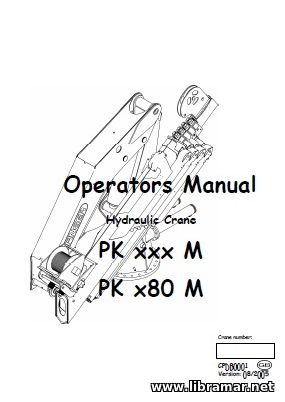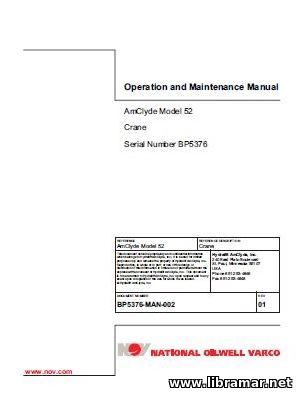Barge Carrying Vessels (Cont.)
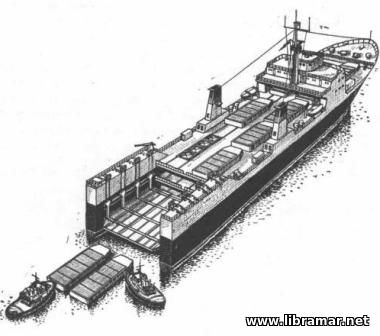
Let us talk a bit more about the barge carrying vessels, playing a very important role in the maritime shipping industry of today, and particularly in transportation of the heavy cargoes. See the previous article for the main discussion. Here we will mainly focus on the SEABEE type of vessel, i.e. the second one.
For the SEABEE type of vessel to empty a full vessel or load a full cargo of barges, giving a theoretical loading or discharge time of 13 hours, it will actually require a theoretical cargo handling total of 64 hours for each round trip, although allowing a 50 percent margin for unforeseen delays, the total cargo handling time is expected to be about four days.
Each barge deck of the SEABEE can accommodate two barge widths, with the upper deck having a capacity for 14 barges while the main and lower decks are each suitable for twelve units, with each hold stowage area measuring 11.1 m (36.54 ft) wide by 5.9 m (19,30 ft) high. As the upper deck is free of obstructions, except in the forward area, it is possible to carry double-width barges or up to ten open-type barges with cargoes of unlimited height, i.e. restricted only by the barge stability limit. It is also possible to carry containers on the top of the upper deck standard type barges.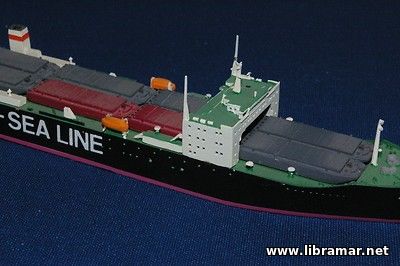
The barges are secured by means of screw-lashing assemblies on the upper deck, while pneumatically-operated screw jacks are lowered from the deck head on the main and lower deck levels to hold the barges securely during transit. Two rows of lashing rings, totaling 68, are fitted around the barge deck itself for securing cargo. Between these rows, a row of combined cargo lashing cleats and pedestal sockets is fitted. Portable pedestals are fitted in these sockets to support up to ten 30-ft containers.
In order to bridge the gap between the forward end of the elevator and the vessel, a hydraulically-operated, hinged ramp is fitted along the after end of the three deck levels. This small ramp, some 1.5 m (5 ft) wide, is arranged in four sections on each level. At the service draft of 9.7 m (31.83 ft) the lower deck is just above the waterline, while at the scantling draft 11.9 m (39 ft), this deck would be below water level. Therefore, the after end is sealed by means of two watertight, vertically sliding covers, which are moved up to the main deck level when working cargo on the lower deck.
The SEABEE barges are considerably larger than the standard LASH lighter, measuring 29.7 X 10.7 m (97.5 X 35 ft) compared with the usual dimension for the LASH lighter. The barges are of double-skin construction with a forward and after collision bulkhead, giving a 27.4 X 10 m (90 X 32 ft) hold space having a depth of 4.4 m (14.6 ft) from the tank top to the hatch coaming. The 24.4 X 10 m (80 X 32 ft) hatchway is sealed by means of seven pontoon covers.
The barges may be fitted with tween decks to give greater cargo capacity and portable container support beams can be provided at either end and at amidships for the stowage of up to sixteen 40-ft containers. It is also possible to carry containers inside the barge. This may not be justified if the containers are stuffed at the port of loading, as unit loads are then merely being carried in other unit loads.
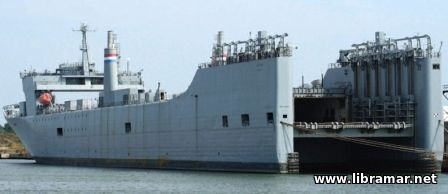 Each barge has a bale capacity of approximately 1,132 m3 (40,000 ft3) with a LASH barge capacity of 564 m3 (19,600 ft3) with the majority of the hold space easily accessible through the large hatch opening. If a full load of 38 barges is carried, the cargo deadweight based on a stowage rate of 2.4m3/ton, would be 17,650 tons, giving an average of 465 tons loading for each barge.
Each barge has a bale capacity of approximately 1,132 m3 (40,000 ft3) with a LASH barge capacity of 564 m3 (19,600 ft3) with the majority of the hold space easily accessible through the large hatch opening. If a full load of 38 barges is carried, the cargo deadweight based on a stowage rate of 2.4m3/ton, would be 17,650 tons, giving an average of 465 tons loading for each barge.
The "Read Later" function allows you to add material to this block with just one click. Just click on the icon and read the articles that interest you at any convenient time.
